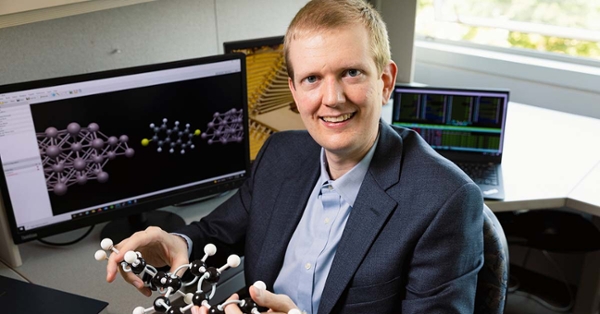Designing the next generation of nanoscale electronics
Designing the next generation of nanoscale electronics

Amid an ongoing semiconductor shortage delaying the production of cars, phones, computers, and televisions, a new research collaboration between Rowan University and Butler University seeks to develop computational tools for designing the next generation of nanoscale electronics. The $222,559 grant was awarded by the National Science Foundation.
It is becoming increasingly more difficult to create these computer chips.
“The classical computing architectures are starting to reach their development potential,” said principal investigator Erik Hoy, Ph.D., an assistant professor of chemistry and biochemistry in the College of Science & Mathematics. “What we're looking to contribute to is the next generation of computer architectures.”
These next-generation devices are incredibly small, but have enormous potential. Hoy and his research team will partner with a team from Butler University to develop new techniques to study these devices on a molecular level more effectively. Previous methods have limitations in their treatment of molecular electronic interactions, and a more comprehensive methodology is needed to ensure that nanoscale architectures deliver their promised performance gains.
Hoy’s software will treat electronic interactions in these devices to a degree that has not been done before. The software will help determine if nanoelectronics-based computer chips will function as engineers hoped. This tool will then be made publicly available for any researcher to use.
“In the long run, it's intended to address a key supply chain problem,” Hoy said. “We’re going to provide new tools, so that when people go to build these devices, they can predict their properties accurately so they know the device will behave as expected.”
The grant will support Rowan’s materials science and engineering program by heavily involving both graduate and undergraduate students throughout the research.
“One of my key goals is to help build the next generation of materials science and nanoscience-focused students in the U.S.,” Hoy said.